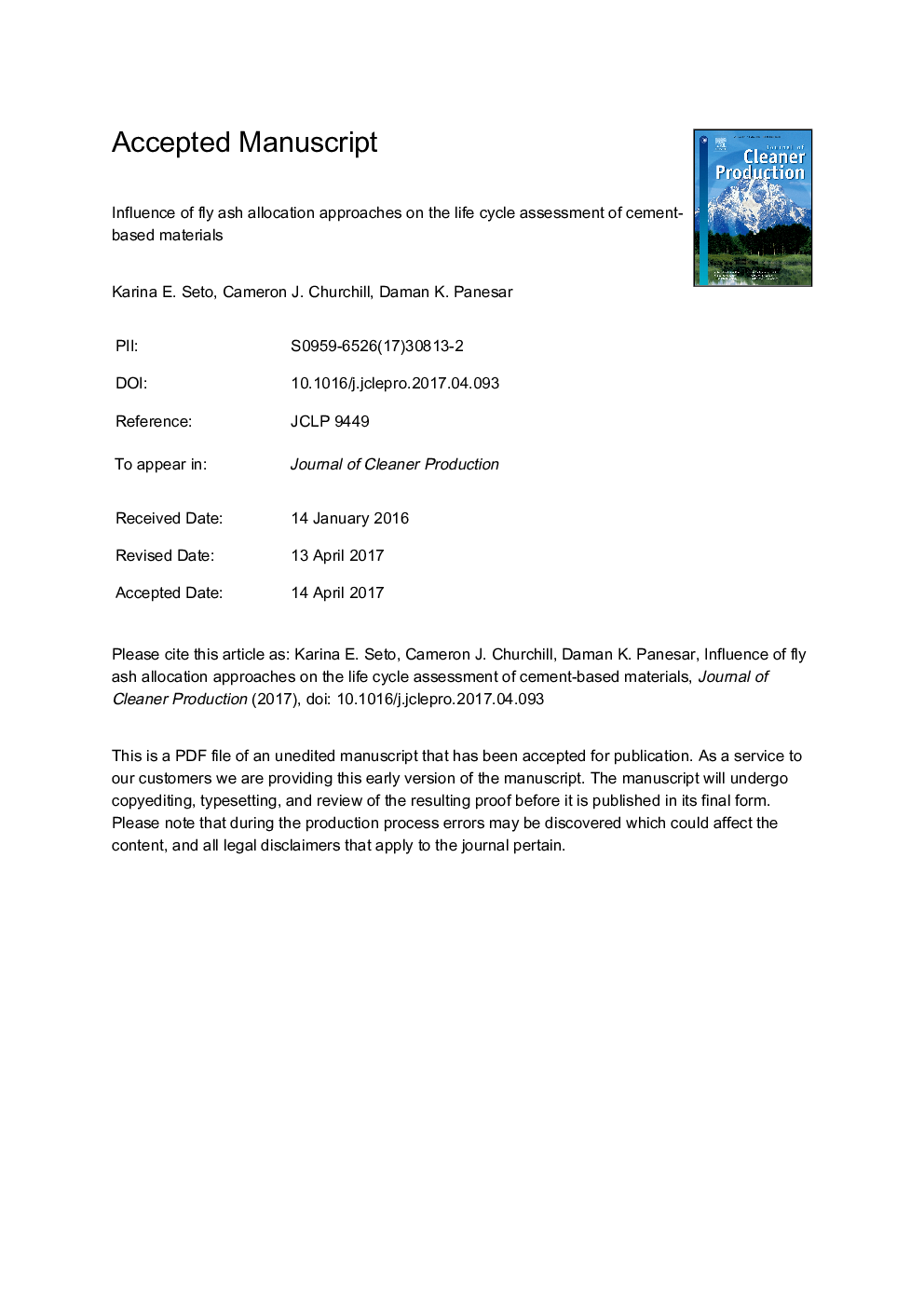| Article ID | Journal | Published Year | Pages | File Type |
|---|---|---|---|---|
| 5481164 | Journal of Cleaner Production | 2017 | 45 Pages |
Abstract
This paper critically compares methods for allocating the environmental impact of fly ash production in a Life Cycle Assessment (LCA) study of concrete, based on an evaluation of the variability in LCA outcomes. LCA models of concrete containing 10, 25 and 50% fly ash as cement replacement are created based on four allocation scenarios: i) Baseline- No Allocation, ii) Mass Allocation, iii) Economic Allocation, and iv) Disposal Avoidance. LCA results are generated and compared to the Baseline scenario. A sensitivity analysis was also conducted. The results show that concrete containing increasing percentages of fly ash have lower environmental impacts. The environmental impacts associated with for the Economic Allocation and Mass Allocation scenarios are higher than those determined from the Baseline and Disposal Avoidance approaches and for all mix designs. This is due to the allocation of environmental impacts from coal mining, preparation and combustion processes by both the Mass Allocation and Economic Allocation scenarios which reduces the normalized green indicator compared to the baseline scenario. Therefore, the results from the analysis indicate that increasing the fly ash content in concrete can yield a concrete with lower environmental impacts but the extent of the reductions strongly depends on the allocation scenario that is applied.
Related Topics
Physical Sciences and Engineering
Energy
Renewable Energy, Sustainability and the Environment
Authors
Karina E. Seto, Cameron J. Churchill, Daman K. Panesar,
